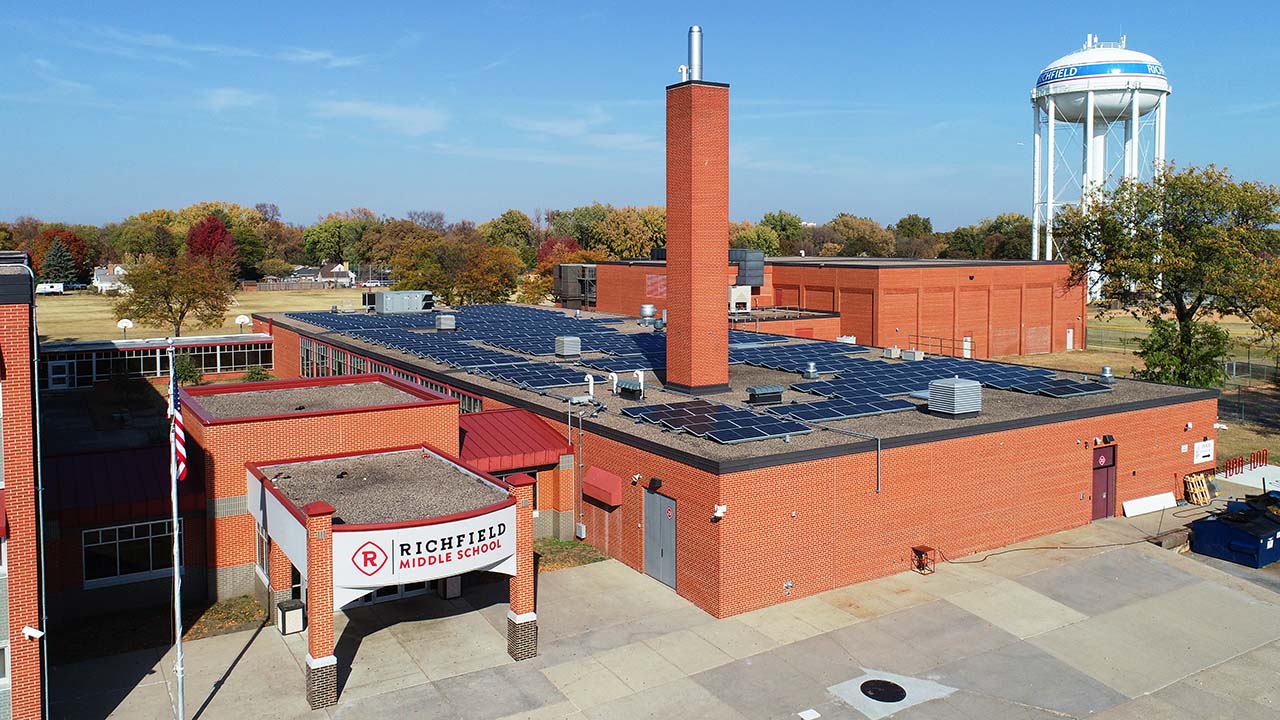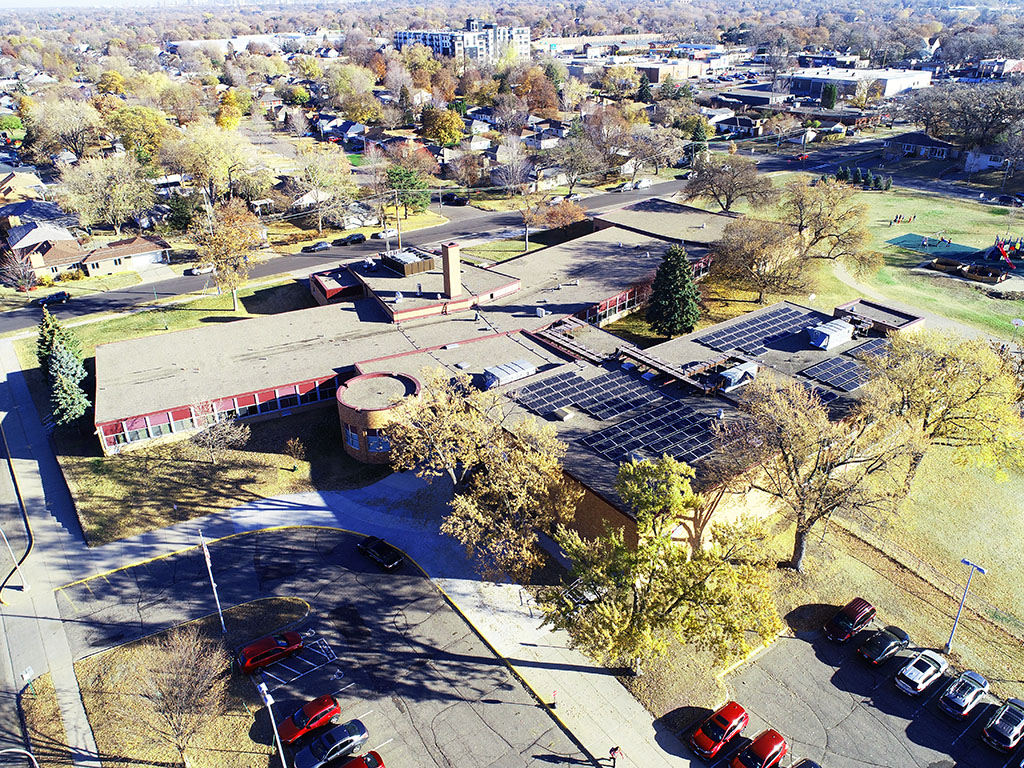
A decade after its first rooftop solar installation, a suburban Twin Cities school district has emerged as a shining success story for Minnesota solar policy.
The Richfield Public School District started with three small solar arrays in 2012 that were supported by the state’s Made in Minnesota rebates for projects using locally manufactured panels.
In recent years, the district has worked with Bloomington-based commercial solar developer iDeal Energies to expand and upgrade those installations with the help of newer incentive programs. Today, it boasts 1.15 megawatts of solar across five buildings that supply about a fifth of the district’s total electricity needs.
“It was a combination of being environmentally friendly but also a financial win-win,” said Craig Holje, chief human resources and administrative officer for Richfield Public Schools. The district is also working to incorporate the systems into STEM curriculum, he said.
Since the original installations, solar panel technology has significantly improved in its efficiency and durability. The new arrays can generate more than twice the electricity in the same footprint, allowing the district to maximize its rooftop space.

Braden Solum, vice president of business development for iDeal Energies, said the projects were enabled in large part by Minnesota’s solar-friendly policies, specifically the PV Demand Credit and Solar for Schools programs available in Xcel Energy’s service territory.
About half of iDeal Energies’ work comes from the public sector, and the majority of those customers are schools. Solum said the Richfield school district was among a handful of early adopters, and its success has helped inspire other schools to follow.
“This is a really good example of a district that as the years have gone by has taken advantage of the opportunities that are in front of them in terms of state policy,” Solum said.
Minnesota schools have not faced the same financing barriers as those in some other states, but Solum said there is hope that pending changes under the federal Inflation Reduction Act (IRA) could make it easier and more beneficial for schools to pursue solar projects by making tax credits more accessible.
The Richfield Public School District shows that schools don’t need to wait for new technology or incentives for solar to make sense, said Isabel Ricker, director of clean energy for Fresh Energy.
“It’s a good example of state policy enabling a public institution to lower its energy costs and make taxpayer dollars go further through solar adoption.”
Making solar installations more accessible and affordable across Minnesota has long been a priority for Fresh Energy. Over the years, we’ve worked with utilities and policymakers to modernize interconnection standards, keep monthly fixed charges low, and design smart rates that encourage energy efficiency and solar installations. Our policy work has given Minnesotans more clean energy options.
This year, we’re excited to see bills advancing at the Minnesota Legislature that would build upon the success of the Minnesota Solar for Schools program. House File 747, authored by Representative Liz Reyer (Eagan) and Senate File 1404, authored by Senator Lindsey Port (Burnsville), would boost solar installations for local and tribal government facilities across Minnesota to ensure more kinds of public facilities can access the benefits of solar energy while reducing greenhouse gas emissions and supporting clean energy jobs here in Minnesota.
Fresh Energy’s Isabel Ricker has testified twice in support of the bill in February and March, alongside partners including MnSEIA, and we’re looking forward to it advancing through the legislature.
“This bill will help local and tribal governments in Minnesota make progress toward their climate and energy goals while achieving additional benefits in long-term energy savings and utility bill stability,” said Ricker.

